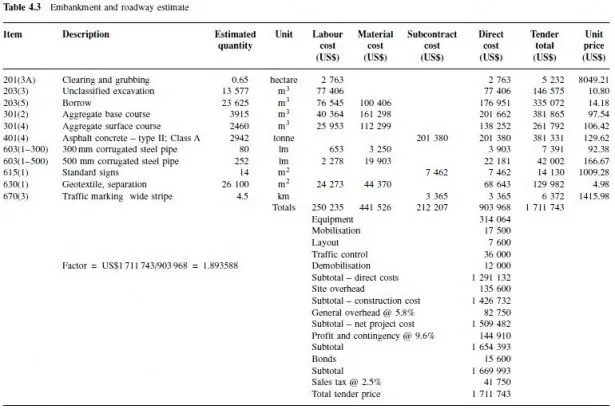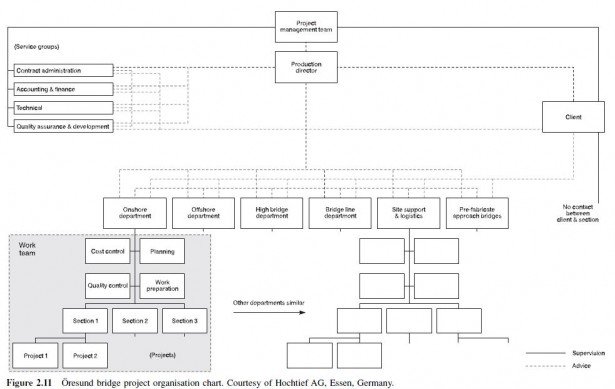In presenting the contractors activities on the construction site, we will suggest, perhaps too simply, that the responsibilities involve three basic areas: monitoring and control, resource management and documentation and communication. Five aspects of monitoring and controlling the work are important. Actual schedule progress must be compared against the project programme to determine whether the project is on schedule; if it is not, actions must be undertaken to try to bring the programme back into conformance. Likewise, the cost status must be checked to establish how actual performance compares with the budget. An equally important part of monitoring and control is quality management, to assure that the work complies with the technical requirements set forth in the contract documents. In addition, the contractor has an important role to play in managing the work safely and in a way that minimises adverse environmental impacts.
In managing the projects resources, the contractor will, first, be concerned with assigning and supervising personnel and assuring that the labour effort is sufficiently productive to meet schedule, cost and quality goals. In addition, materials and plant must be managed so that these same goals are met. Because construction projects require large amounts of paperwork, a special effort is required to manage this documentation effectively. Examples include the various special drawings and samples that must be submitted to the owner or design professional for approval prior to installation, the frequent need to respond to requests for changes in the project after the on-site work has begun and the all-important process for periodically assessing the value of work completed and requesting payment for this work. Various on-line and other electronic means are available to assist contractors with document management and project communications.

